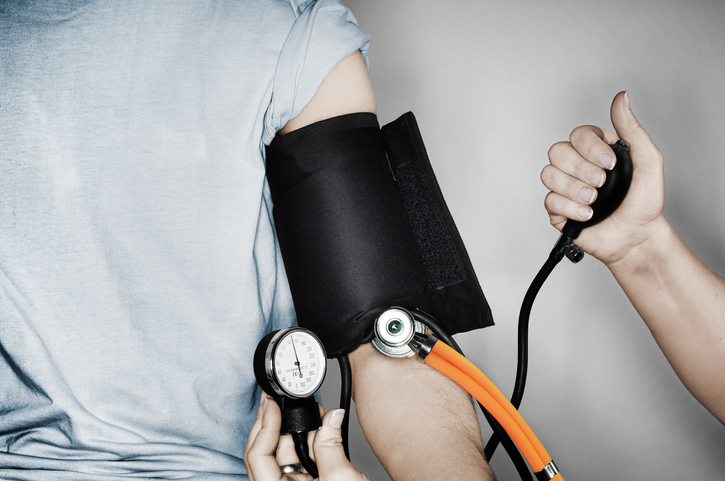 |
Stage 1 hypertension, based on the 2017 American College of Cardiology/American Heart Association BP guidelines, was a significant risk factor for OAG, especially for patients with isolated diastolic or both systolic and diastolic hypertension. Photo: Getty Images. |
It’s known that hypertension can increase the risk of open-angle glaucoma (OAG); however, it’s unclear whether blood pressure (BP) medications could play a role in this association. To help determine this, researchers conducted a study to evaluate the risk of OAG in untreated hypertension patients. They found that the risk of OAG increased with higher BP, and for patients with stage 1 diastolic hypertension, this effect persisted after normalization of BP.
The retrospective, observational cohort study included 360,330 patients evaluated within a two-year period. At the time of the exam, patients were at least 40 years old (mean age: 51) and not taking antihypertensive or antiglaucoma drugs. Based on their BP, the researchers categorized patients into the following groups as per the 2017 American College of Cardiology/American Heart Association (ACC/AHA) BP guidelines:
- normal BP (systolic BP <120mm Hg and diastolic BP <80mm Hg; n=104,304);
- elevated BP (systolic BP 120mm Hg to 129mm Hg and diastolic BP <80mm Hg; n=33,139);
- stage 1 hypertension (systolic BP 130mm Hg to 139mm Hg or diastolic BP 80mm Hg to 89mm Hg; n=122,534); or
- stage 2 hypertension (systolic BP 140mm Hg or diastolic BP 90mm Hg; n=100,353).
The average follow-up length was 11.8 years. During this time, 12,841 patients (3.56%) were diagnosed with OAG, with the following incidence rates per 100,000 person-years: 251.0 for normal BP, 294.7 for elevated BP, 306.5 for stage 1 hypertension and 354.8 for stage 2 hypertension. After adjusting for confounding variables and using normal BP as the reference, the researchers found that stage 1 hypertension increased OAG risk by a factor of 1.1 and stage 2 hypertension increased the risk by a factor of 1.1.
In their paper on the findings, published in American Journal of Ophthalmology, the researchers explained that “systemic BP may contribute to the pathogenesis of glaucoma in a number of ways. One postulated mechanism is overproduction of aqueous humor, which results from elevated ciliary flow and capillary pressure.” They added, “Another possible mechanism is concerned with impaired outflow of aqueous humor subsequent to elevated episcleral venous pressure. Systemic inflammation and metabolic stress are also possible mechanisms, resulting in disrupted axonal transport and retinal ganglion cell death.”
Additionally, the researchers noted that the study’s data also suggested stage 1 hypertension may increase the risk of OAG through chronic and permanent damage. “This is because the reversal or normalization of BP from stage 1 hypertension in a subgroup of subjects with additional BP measurements was not associated with reduced risks of OAG over time,” they pointed out in their paper.
When researchers divided stage 1 hypertension patients up between isolated systolic hypertension, isolated diastolic hypertension and systolic and diastolic hypertension, they found that after BP normalization, the increased risk of OAG remained in patients with the latter two conditions, but not in those with stage 1 isolated systolic hypertension.
“From these results, we extrapolate that changes in diastolic BP may possibly be associated with increased risks of OAG,” the researchers wrote. “Numerous studies have identified diastolic BP as an important factor in OAG in the past.” They cited one such study—the Thessaloniki Eye Study—which reported that diastolic BP >90mm Hg resulting from antihypertensive treatment was associated with increased cupping.
The researchers conclude that untreated hypertension—according to the 2017 American College of Cardiology/American Heart Association BP guideline—can increase the risk of OAG, especially in those with heightened diastolic BP. “Routine ophthalmic evaluation and screening may be necessary in individuals with hypertension for early diagnosis of OAG,” they suggested.
Lee JS, Kim YG, Sunyeup Kim S, et al. Increased risks of open-angle glaucoma in untreated hypertension. Am J Ophthalmol. April 6, 2023. [Epub ahead of print]. |

